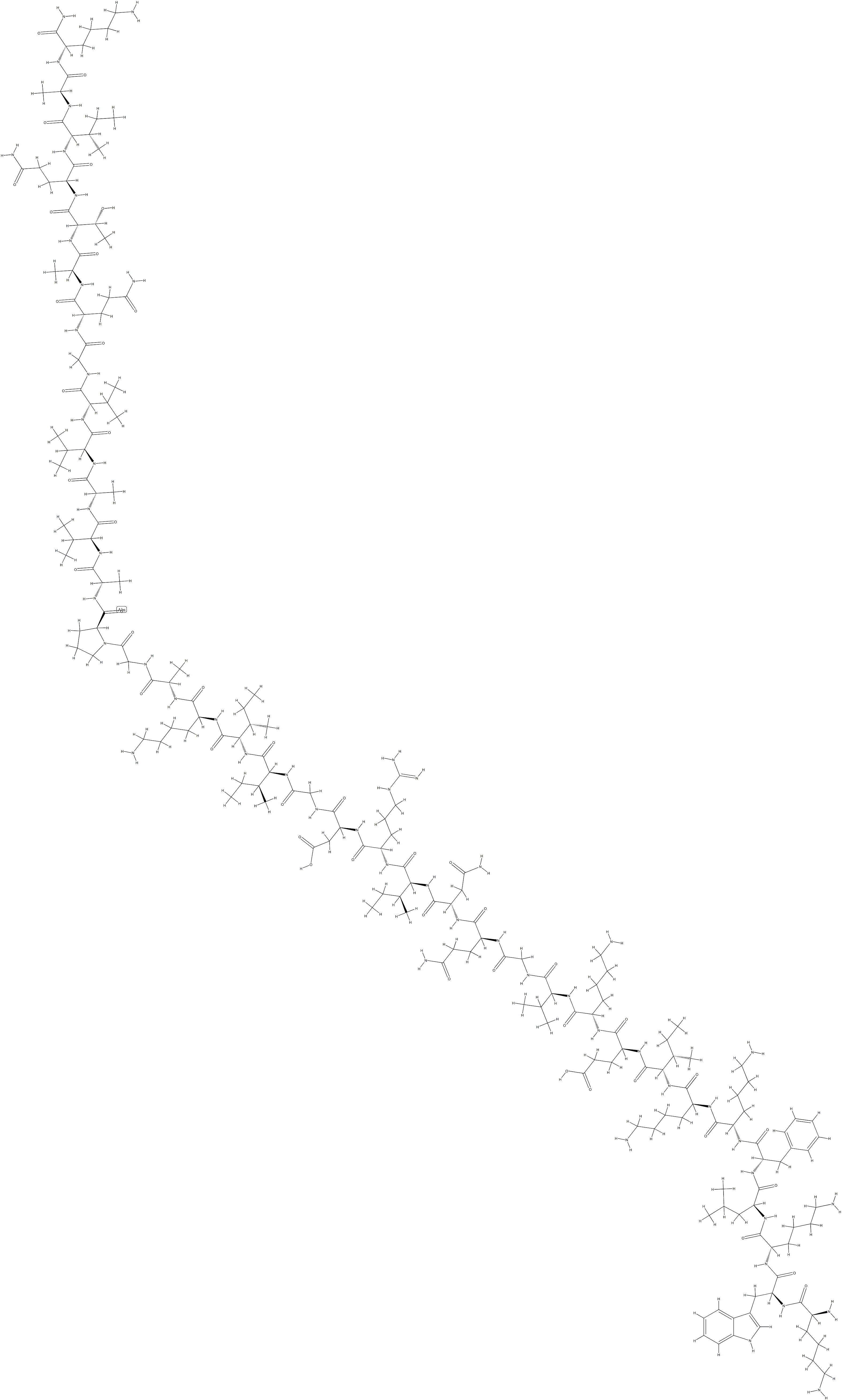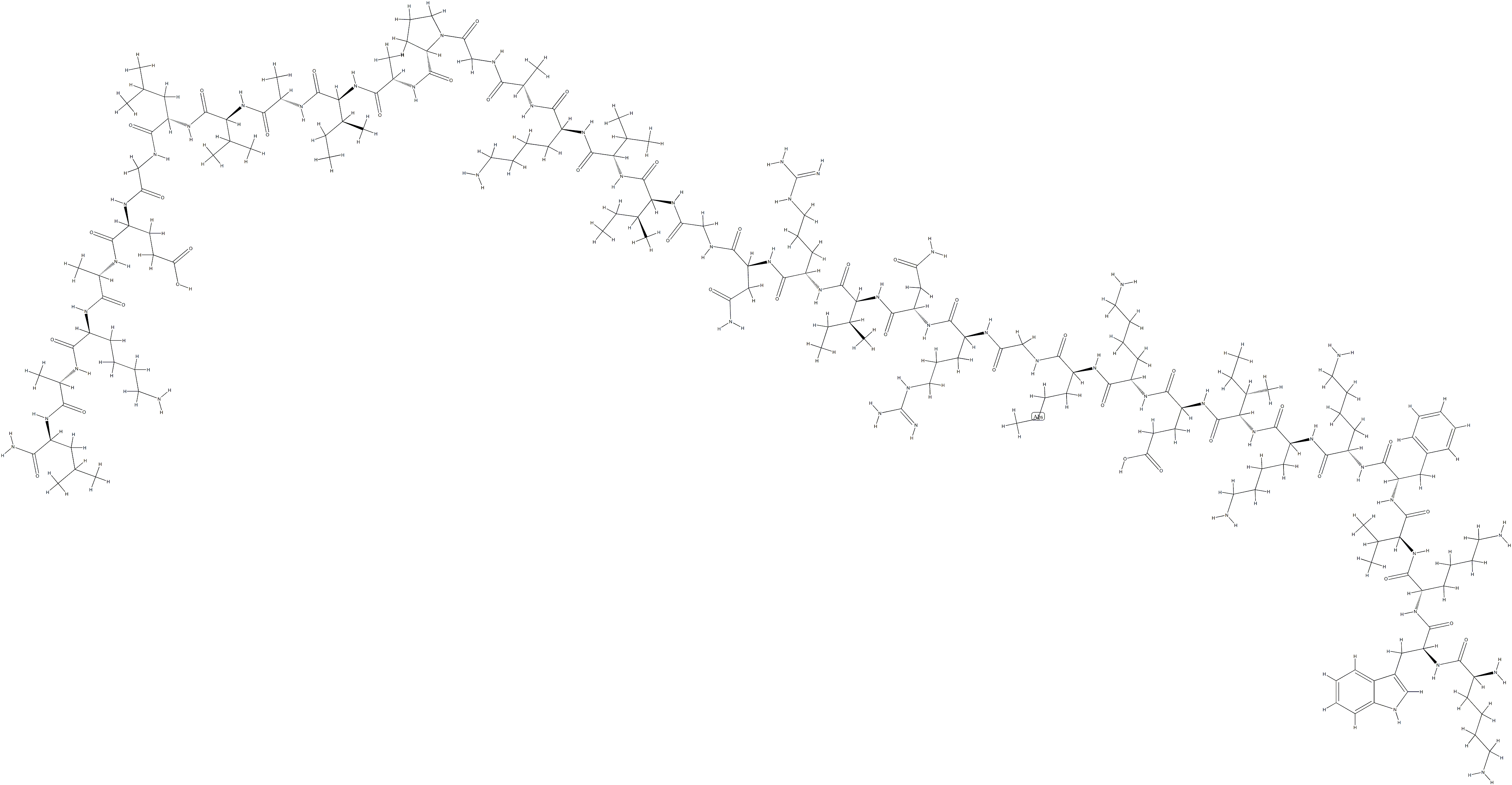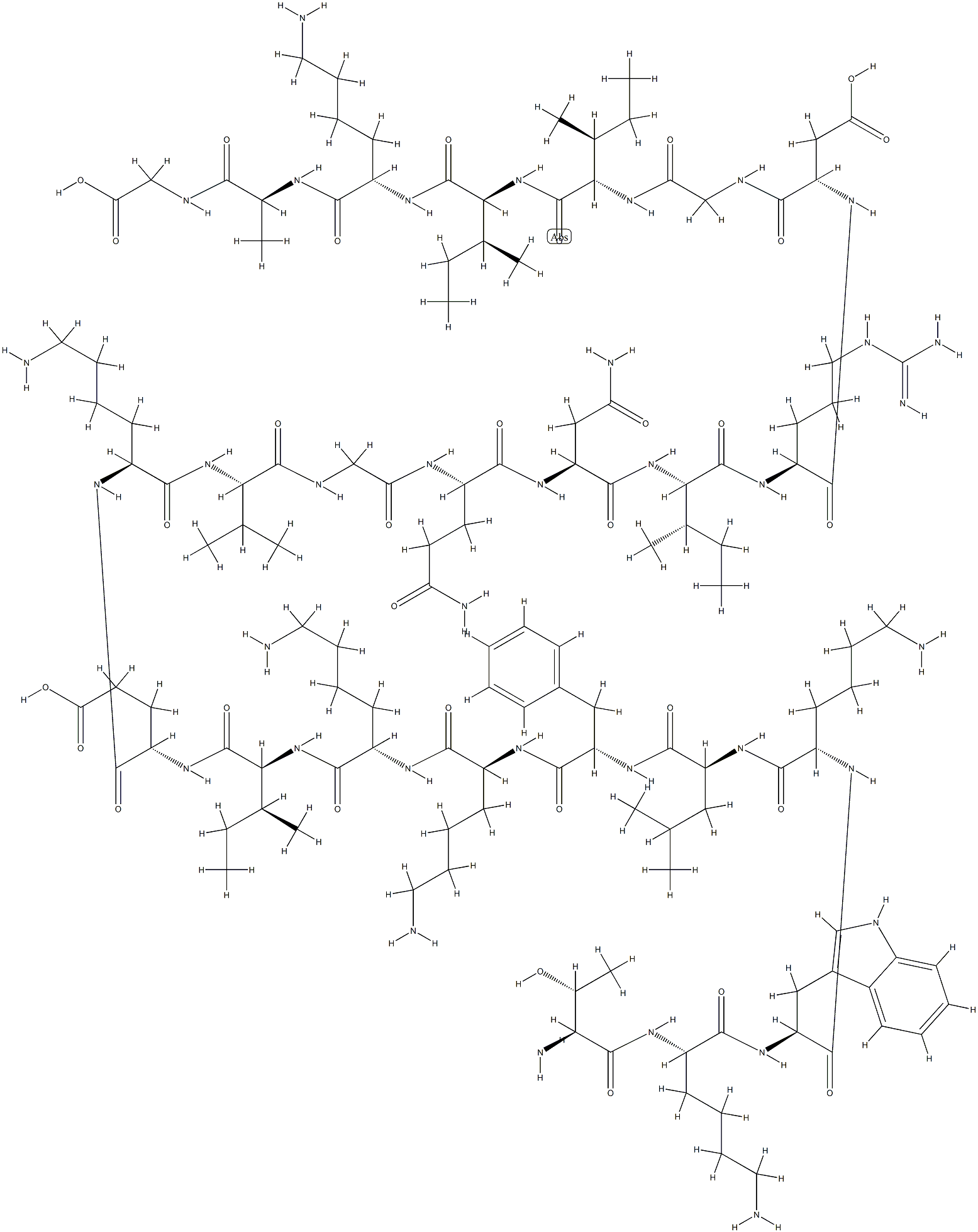CECROPIN A
- CAS NO.:80451-04-3
- Empirical Formula: C184H313N53O46
- Molecular Weight: 4003.78152
- MDL number: MFCD00130752
- Update Date: 2024-11-19 23:02:33

What is CECROPIN A?
The Uses of CECROPIN A
Cecropin A is an antibacterial peptide originally identified in moths.
The Uses of CECROPIN A
Cecropin A has been used as an antimicrobial peptide (AMP):
- to test its cytotoxic effect on breast adenocarcinoma (MDA-MB-231) and human mesothelioma (M14K) cell lines
- in ultrasensitive radial diffusion assay against E coli to test Galleria mellonella protein 24 and apolipophorin III effects
- to test its minimal inhibitory concentrations (MICs) in sensitivity assay for Photorhabdus variants
What are the applications of Application
Cecropin A is an antibacterial peptide originally identified in moths
General Description
Cecropin A belongs to cecropin class and comprises 37 amino acid residues in L configuration. Structurally, this peptide has a C-terminal hydrophobic α-helical structure and the amphipathic N-terminal end. Cecropin A is linear and cationic in nature.
Biochem/physiol Actions
Cecropin A interacts with cell membranes and makes it permeable for electrolytes. Cecropin A thus, favors cytolysis and finally cell death in the hepatocellular carcinoma and lymphoma. The synthetic cecropin A in transgenic rice confers protection against bacterial as well as fungal pathogens.
Properties of CECROPIN A
| storage temp. | -20°C |
| form | powder |
| color | White to off-white |
| Water Solubility | Water : ≥ 50 mg/mL (12.14 mM) |
Safety information for CECROPIN A
Computed Descriptors for CECROPIN A
New Products
Tert-butyl bis(2-chloroethyl)carbamate 4-Methylphenylacetic acid N-Boc-D-alaninol N-BOC-D/L-ALANINOL 3-Morpholino-1-(4-nitrophenyl)-5,6-dihydropyridin- 2(1H)-one Furan-2,5-Dicarboxylic Acid Tropic acid DIETHYL AMINOMALONATE HYDROCHLORIDE 1,1’-CARBONYLDIIMIDAZOLE R-2-BENZYLOXY PROPIONIC ACID 1,1’-CARBONYLDI (1,2-4 TRIAZOLE) N-METHYL INDAZOLE-3-CARBOXYLIC ACID (2-Hydroxyphenyl)acetonitrile 4-Bromopyrazole 5-BROMO-2CYANO PYRIDINE 5,6-Dimethoxyindanone 5-broMo-2-chloro-N-cyclopentylpyriMidin-4-aMine 2-(Cyanocyclohexyl)acetic acid 4-methoxy-3,5-dinitropyridine 2-aminopropyl benzoate hydrochloride 1-(4-(aminomethyl)benzyl)urea hydrochloride diethyl 2-(2-((tertbutoxycarbonyl)amino) ethyl)malonate tert-butyl 4- (ureidomethyl)benzylcarbamate Ethyl-2-chloro((4-methoxyphenyl)hydrazono)acetateRelated products of tetrahydrofuran








You may like
-
 Cecropin A CAS 80451-04-3View Details
Cecropin A CAS 80451-04-3View Details
80451-04-3 -
 1975-50-4 98%View Details
1975-50-4 98%View Details
1975-50-4 -
 2-HYDROXY BENZYL ALCOHOL 98%View Details
2-HYDROXY BENZYL ALCOHOL 98%View Details
90-01-7 -
 2-Chloro-1,3-Bis(Dimethylamino)Trimethinium Hexafluorophosphate 221615-75-4 98%View Details
2-Chloro-1,3-Bis(Dimethylamino)Trimethinium Hexafluorophosphate 221615-75-4 98%View Details
221615-75-4 -
 61397-56-6 CIS BROMO BENZOATE 98%View Details
61397-56-6 CIS BROMO BENZOATE 98%View Details
61397-56-6 -
 14714-50-2 (2-Hydroxyphenyl)acetonitrile 98+View Details
14714-50-2 (2-Hydroxyphenyl)acetonitrile 98+View Details
14714-50-2 -
 118753-70-1 98+View Details
118753-70-1 98+View Details
118753-70-1 -
 733039-20-8 5-broMo-2-chloro-N-cyclopentylpyriMidin-4-aMine 98+View Details
733039-20-8 5-broMo-2-chloro-N-cyclopentylpyriMidin-4-aMine 98+View Details
733039-20-8